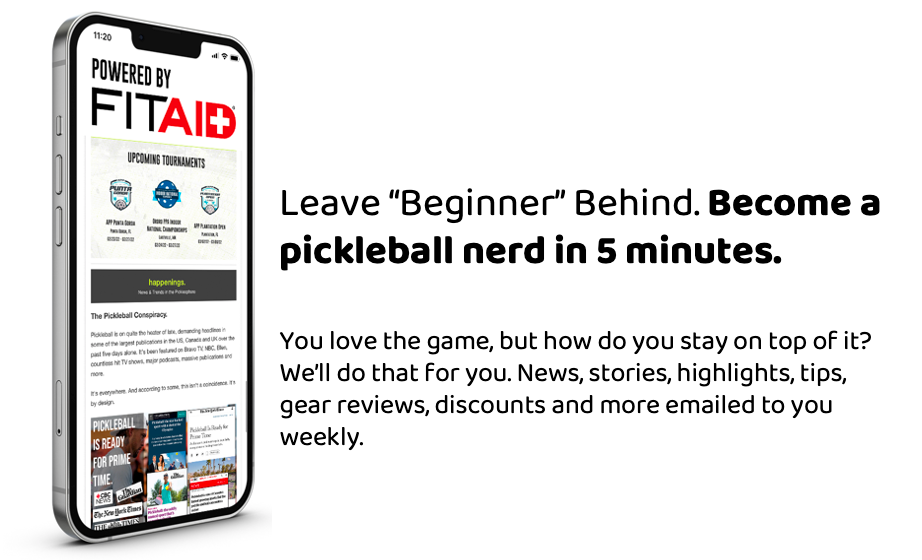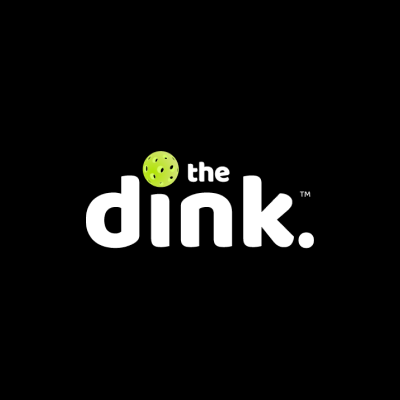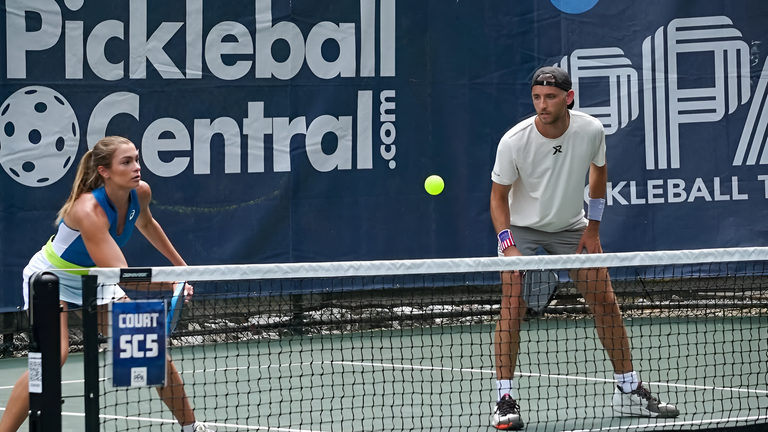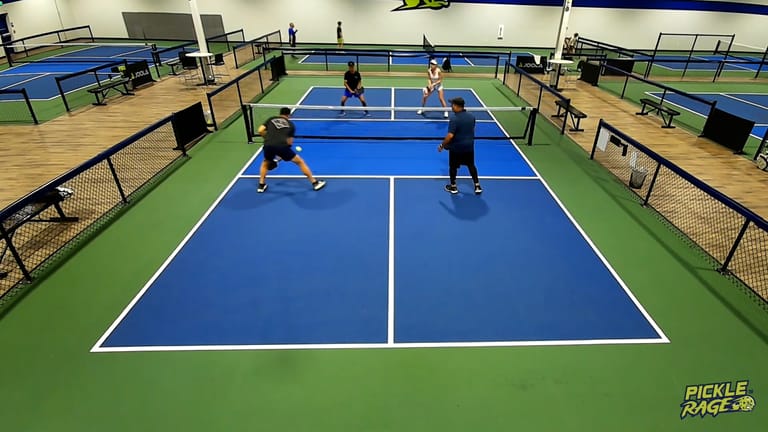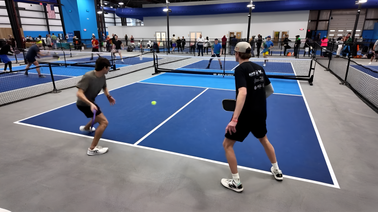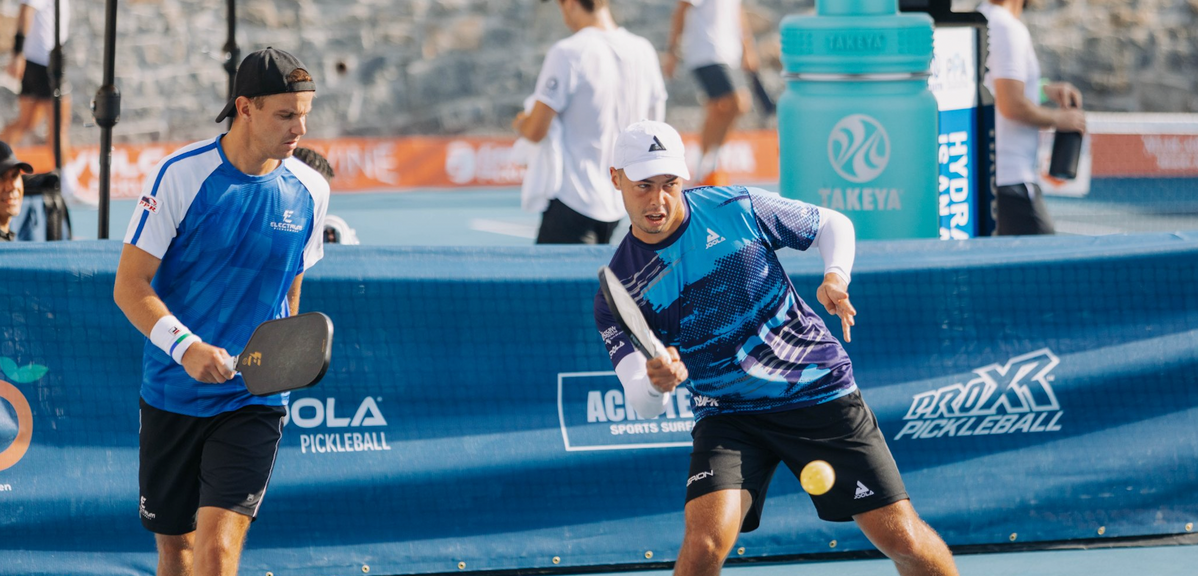
Up Your Game
Collin Johns Shares 15 Pickleball Gems for the Amateur Player
by The Dink Media Team on
In a recent Instagram post, Collin Johns documented his experience attending an amateur pickleball tournament.
He compared the event to the pro level treatment he sees week in and week out. From his time spent watching, Johns assembled 15 tips that apply directly to the amateur game.
- Prep for success. Maximize your preparation by bringing these critical times: towel, LOTS of water, cooler with ice, something that provides you shade like an umbrella, sunscreen, electrolytes, change of clothes, multiple wristbands, light snacks like protein bars, bananas, nuts, hat with a brim, extra socks and a therapist. You'll thank yourself later.
- Warm up the shots you will likely be hitting the most. Dinking is a great way to warm up but it is not a shot that is hit with high frequency in a typical amateur match. Spend more time warming up: serves, returns, drives, counterpunches, drive counters, and transition shots. You'll be hitting more of those than dinks.
- Many points continue because out-balls are played. The shots that overhit are almost always telegraphed with a big backswing from a low contact point. When you see this from an opponent, side step out of the way and watch your opponent grimace as the ball goes out 90% of the time.
- Shots regress to the middle of the court. Because ball control is somewhat limited, it makes it difficult to consistently win points to the outer areas of the court. Shots cross near the middle of the net the majority of the time so if you're not sure where your opponent is about to hit to - guess middle. You'll guess right a huge portion of the time.
- Drop cross-court, not middle. Many points are given up easily to the returners simply because the serving team hits their drop to the middle. It is quickly discovered by aggressive left side players that leaning forward with an outstretched forehand, results in lots of floating juicy drops for them to crush. Con;t put the ball on their paddle right where they're waiting. Instead drop cross-court, preferably to the backhand, to give yourself a ticket forward more consistently.
- Drive middle or line, not cross-court. Many points are lost by driving cross-court, which gives your opponents more reaction time and a beautiful angle to roast your partner. There's not wrong with a good drive but hit it middle or line.
- Lob. Lob often. Amateur players often defend better than they cover and smash overheads. Lobbing offensively or defensively can pay huge dividends. Don't forget to throw in some lobs to see if they have a high success rate. Yes, you will be hated. But I promise you'll win more points.
- Reset lower and deeper rather than high and short. A poor level reset is often lofty and short rather than low and deep but that's because professional topspin rolls are so deadly. Amateurs are much better at attacking floaters or off the bounce than they are reaching forward at waist level or below. Hit more resets as conservative line drives at the kitchen line rather than trying to puff a perfect reset shallow in the kitchen. You'll hit less floaters ad the point will continue more often than not.
- If you have a confident and aggressive serve, see if you can get a few return errors or setups by hitting your serve aggressively. BUT if you are NOT winning a substantial number of points with your serve, do NOT continue to throw away lots of points with missed serves. It is a cardinal sin to miss serves with basis, especially because of a lack of focus. Second only to missing returns of serve for the same reason.
- The law of the downward angle - thee who angles a volley down first, will win the point an enormous percentage of the time. Firefights are frequent and often prolonged far longer than necessary since players choose power over downward angle. Prioritize taking a little speed off your counterpunchers in order to angle them down rather than straight with power. Although it doesn't feel as good, you'll watch your opponent overhit their counter much more frequently.
- Who you choose to drop and return are critical strategic decisions that are easy to implement. Leverage them.
- Look for 5th shot poaches after a good 3rd. The returning team frequently hangs their 4th shot reply through the middle when receiving a quality 3rd. Accept the offensive coaching opportunity as the partner of the player nailing a good 3rd. You'll wreak havoc on unsuspecting kitchen line victims. (Alternately if you're getting roasted on 5th shot poachers, keep your team safe by conceding the kitchen line with a dink into the kitchen.)
- Use your timeouts to break momentum or simply catch your breath when needed. You have two timeouts per game. You can't take them with you. Use them when it's called for
- You don't need to be the world's best strategist, but at least determine who their better attacker and better defender is. That way you can target the weaker player, depending on the situation. The answer to this isn't always the same player and it can often be surprising to find that their better attackers is their worse defender.
- Put one extra ball in the court at all costs. Amateur players miss a substantial number of put-aways that are gimmes. Scrap out one more ugly ball and don't be proud about not giving your opponents the satisfaction of hitting a clean winner. You'll sometimes receive screams of dismay from your opponents for your efforts.
It is easy to lose track of the fundamentals when you are caught in a tournament setting. These 15 tips will help put the odds in your favor with every point.
